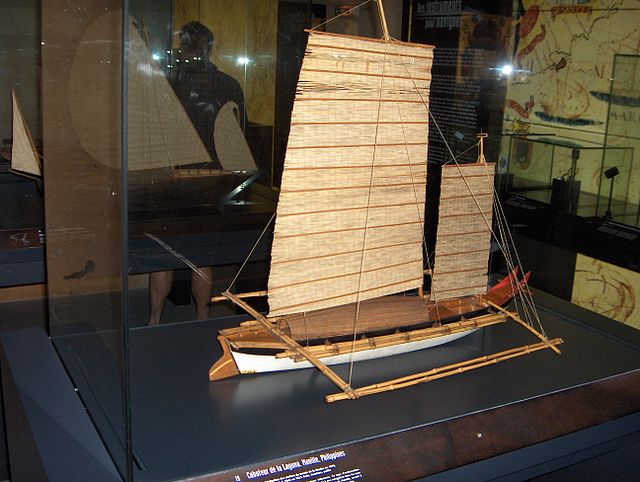The junk rig, also known as the Chinese lugsail, Chinese balanced lug sail, or sampan rig, is a type of sail rig in which rigid members, called battens, span the full width of the sail and extend the sail forward of the mast.
The Keying was a Chinese ship that employed a junk sailing rig.
Scale model of a Tagalog outrigger ship with junk sails from Manila, 19th century
A bronze mirror of Tang, Wudai, or Song era, shows a ship with a square sail. Shaanxi Provincial Museum, Xi'an.
A Southeast Asian ship with battened sails, Cambodia, 12–13th century CE.
Tanja sail or tanja rig is a type of sail commonly used by the Austronesian people, particularly in Maritime Southeast Asia. It is also known as the tilted square sail, canted rectangular sail, rectangular balance lug, or balance lug sail in English. In historical sources, tanja sail is sometimes incorrectly referred to as lateen sail or simply square sail.
A lanong with three tanja sails of the Iranun people of the Philippines
the "Luf Boat", a Micronesian catamaran with tanja sails in the Humboldt Forum, obtained in 1903 from Luf Island, Hermit Islands, Bismarck Archipelago
Samudra Raksa running before the wind, with "goosewing" sail configuration (receiving wind from aft).
One of the ships in Borobudur depicting a double-outrigger vessel with tanja sails in bas-relief (c. 8th–9th century)








